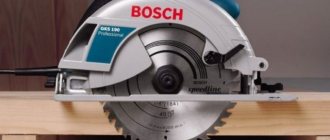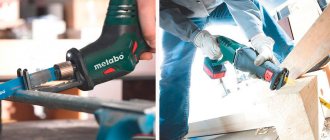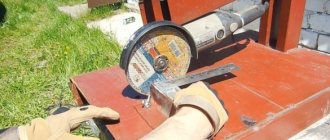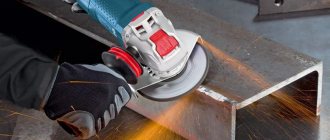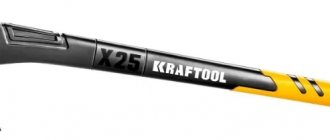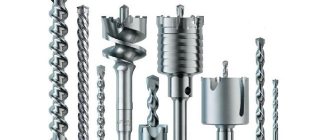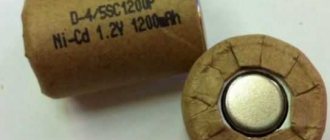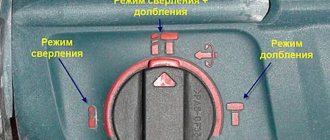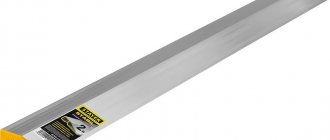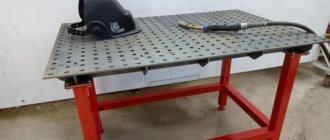Types of spatulas
A spatula is a spatula or plate with a handle made of rubber, metal, plastic, or other material. It can have different shapes and different sizes. Spatulas differ from each other in their scope of application - some are suitable for finishing the preparation of walls, others for rough leveling, and others for decorative work. Using spatulas, you can remove old materials from walls and ceilings, apply glue and even paint. The tool is selected strictly in accordance with its purpose, otherwise the quality of the work may decrease.
Facade
This spatula is suitable for finishing large areas, and is suitable not only for facades. They can be used to apply and distribute plaster and putty over the surface, level solutions, and eliminate defects. Using a façade spatula, interior walls, ceilings, load-bearing structures, partitions, plinths, etc. are processed. It is best to work with such tools on large surfaces, because their length is usually also significant (15-80 cm).
Most often, facade spatulas are made of strong stainless steel. Their durable, massive blade does not bend during operation and is not subject to deformation even when compressed, pressed, or pressed with force. It is rigidly attached to the handle with an aluminum profile, so the risk of breakage is minimal. The handle is usually rubberized and does not slip out during operation. Since façade spatulas are often made from durable, high-quality materials, their price is quite high.
The working surface of the product resembles a quadrangle, two sides of which are parallel, and two have a slope (like a trapezoid). To level the walls, a facade spatula is used together with a paint spatula, because it will be inconvenient to scoop up the composition with such a wide blade.
Painter
This tool resembles a facade one, but has a number of differences. The blade size here is 20-45 cm, the working edge is thinner. Typically, the production of painting spatulas uses metals that are not very strong and of high quality, so they are more affordable in price, although they last an order of magnitude less. If pressed or bent strongly, the device may break.
Since the working part of the spatula is flexible and thin, the tool is used for thin-layer puttying and other types of finishing. Using the product, you can make the surface perfectly smooth, mask the seams between gypsum board sheets, and eliminate recesses and chips. It also allows you to clean the walls from old cladding and remove wallpaper. The shape of the instrument is trapezoidal, the handle is usually made of plastic.
Metal
In addition to the listed types of metal spatulas, you can find narrow tools in stores - scrapers. They are small in size, elongated in shape and are used for removing building materials from surfaces. The scraper blade is quite thick and is not subject to deformation, as it is made of durable stainless metal. The width of metal scrapers does not exceed 5-7 cm.
Rubber
Rubber spatulas are made from durable and elastic types of rubber. Their sizes can be very different - from small to huge, and the price greatly depends on the dimensions. Devices with a wide part with a rubber or wooden handle are used for processing large areas and for applying liquid, flowing compounds.
Medium and small rubber tools are intended for:
- rubbing seams;
- covering up scratches on the finished finish;
- eliminating dents in fiberboard flooring;
- sealing seams between tiles;
- processing hard-to-reach areas.
Rubber tools are often sold in sets of several pieces of different sizes. Usually they are solid cast and have no seams, so they allow puttying without loss of quality.
Plastic
With the help of plastic tools you can perform a variety of types of work. They can be smooth or jagged, the latter being intended for applying glue. Use small notched spatulas to process small tiles. The falcon-shaped tool is designed for applying glue to massive slabs for laying flooring. Curly plastic spatulas are also available for sale. They allow you to give the surface a certain texture. Most often, such products are used when laying decorative plaster or liquid wallpaper.
For tiles
Such instruments are serrated. Their front part ends with an uneven edge containing teeth of different sizes and unequal heights (0.6, 0.8, 1, 1.2, 4 mm). The working surface of the tile spatulas is secured to a durable rubber or wooden handle. Only for rubbing tile joints choose a regular spatula without teeth, preferably rubber.
The teeth of the tool allow you to apply tile adhesive in a ribbed layer, which increases the adhesion force of the composition to the base. The larger the tile, the larger the teeth should be. So, for small mosaics you should choose products with frequent and small teeth. For porcelain tiles, select the largest devices with large teeth, and apply the glue in 2 steps - on the tile and on the base, making movements in opposite directions.
The correct selection of a spatula will not only improve the quality of contact between the tile and the substrate, but also save mortar.
Angular
Corners are often treated with putty to make them perfectly smooth, strengthen them and eliminate even the smallest defects. For this work you will need a special angled spatula. It has a metal working blade bent at an angle of 90 degrees, which is mounted on a durable handle. This shape allows you to quickly align the corners between walls and under the ceiling.
The tool is no less suitable for working with external corners, although for such cases you can use a regular spatula. Only when the corners are clearly collapsed, where it is almost impossible to bring them to 90 degrees with a solution alone, is it better to use profiles (corners). However, their plastering and puttying is also done using an angled spatula.
For decorative plaster
In hardware stores there are tools that are used only for decorative finishing and are not suitable for leveling walls. A trowel or Venetian spatula is ideal for this purpose. This device has a complex tetrahedral shape of the working surface. The latter is mounted on a wooden or rubber handle. The trowel allows you to evenly stretch the plaster along the wall, creating a beautiful decorative layer.
In addition to a spatula, special construction floats are often used to apply decorative materials. For example, a float is used to grout the walls after spreading the bark beetle plaster. You can also use a type of painting spatula in the form of a small spatula with a polished blade to decorate surfaces. It helps to create the thinnest layer of material without unnecessary labor costs.
Japanese
The Japanese spatula is very different in configuration from traditional tools. It is used less often than conventional spatulas, although it is quite convenient and easy to use. The Japanese spatula is a rectangular plate, to which a flat profile-handle is attached on one side along its entire length. Typically, such tools are sold in sets of 4 pieces and are available with different working blade widths (6, 8, 10, 12 cm). The most popular are spatulas with a width of 10 and 12 cm. Their blade is elastic, durable, and does not deteriorate when bent.
Japanese spatulas are indispensable for the following work:
- processing of arches, complex structures with concave and convex bases;
- work in confined spaces;
- the need to apply a thin layer of putty.
Trusted manufacturers
German is known to Russian consumers as a seller of repair products such as rollers, brushes, glue guns, paint containers and spatulas. This entire tool has proven itself to be unpretentious and reliable among professional builders. Biber spatulas are produced for different types of work and are made of various materials - stainless steel, plastic and polyvinyl chloride, with wooden and plastic handles.
The FIT-Tool company is an official dealer of the Canadian company, producing electric and hand tools for household and professional use. It has a large network of branches throughout Russia. One of the niches in hand tools for every day is occupied by painting and plastering and finishing models. The advantage of FIT spatulas is their affordable price, quality, ergonomics and variety of models and types.
Today the Russian market is developing dynamically. It specializes in the production and sale of hand-held construction tools. The company is constantly increasing the output of finished products and assortment, and regularly modernizes production. High-quality raw materials are used in the manufacture of spatulas. The combination of price and quality makes them affordable for consumers and makes them in demand for professionals.
Related article: Is it necessary to putty the walls before wallpapering?
A participant in the global market for quality goods is the well-known Russian one. The company regularly increases its range and improves its finished products. It has its own testing laboratory where, before reaching consumers' shelves, products undergo multiple tests. Spatulas from this company are presented in two-component and plastic variations. A quality service created specifically for this purpose is responsible for their quality.
This is not the entire list of manufacturers of quality spatulas in the middle and budget price categories.
Tool sizes
When purchasing, be sure to pay attention to the size of the spatula. The width of the working surface must be optimally suited for the specific type of base, otherwise the quality of the result will decrease.
Wide
The largest sizes are usually those of façade tools. Their length is 60-80 cm, which allows you to eliminate the roughest and most serious surface defects in a short time. Most often, such devices apply the material in a thick layer. Wide spatulas also include spatulas with a 30-40 cm blade, which are perfect for processing interior walls and ceilings.
Average
Medium-sized tools (15-25 cm) are used to remove dents, irregularities, and defects that remain after the initial surface treatment. The putty layer will be smooth, even, only minimal defects may remain on it, which can be erased by sanding.
Narrow
Narrow tools (5-10 cm) allow you to eliminate even small depressions and cracks. For larger irregularities, such spatulas are not suitable - they will follow their outlines, leaving them in the same place. Also, such tools are useful for lining hard-to-reach areas and collecting working solution from a large container.
How to choose a good spatula
When purchasing, you need to pay attention to the ease of holding the spatula in your hand, as well as the quality of the handle. A plastic handle is easier to clean from finishing materials, but it is more fragile than a durable rubber handle. Wooden handles and products with a rubberized front part, which definitely will not slip out of your hand, have proven themselves well. Also in stores there are spatulas with a replaceable working surface - their handle is removable. Handles that are too long and narrow are inconvenient to use.
Also, when choosing, you should pay attention to the thickness of the blade. For large and medium spatulas, it should not be less than 0.5 mm, otherwise, even with minimal load, the blade will begin to bend and deform. It will not level the surface, but will only slightly smooth out defects. The stronger the blade material, the lower the risk of breakage. If you have a large area of walls or ceilings to process, it is better to immediately buy the most reliable tool.
Trapezoidal spatulas are considered the most effective blade shape. Professionals do not advise buying tools in the form of triangles or droplets, as they are inconvenient to use. When pressed, the working part of the device should spring slightly. Stainless steel tools are considered ideal, since ordinary steel begins to rust over time from constant contact with a wet solution. The spatula should not have grooves, sharpening points, or “burrs,” otherwise it will leave unevenness on the wall being processed.
Among the range of devices for applying putty you can see products from domestic and foreign brands. If you plan to use a spatula regularly, you should give preference to professional models, which are more expensive but made of the highest quality materials.
The following are considered good brands of spatulas:
- Homa;
- Eurotex;
- Santool;
- Matrix;
- "Bison".
All of these companies guarantee high quality products and provide a long warranty on their use. The cost of foreign products is usually an order of magnitude higher than the price of domestic ones.
Serrated
Notched trowel
This type of trowel is designed specifically for applying the adhesive mixture. Ceramic tiles are a popular decorative material that is used for wall cladding in the bathroom and kitchen. A trowel with large teeth is perfect for laying tiles. Using this spatula you can lay both floor tiles and different types of mosaic tiles. Thanks to the teeth on the trowel blade, it is possible to eliminate air bubbles from the adhesive mass, which allows you to create a more dense fit of the tiles.
The frequency of the teeth and their size allows you to choose between spatulas, focusing on the thickness of the tile adhesive layer. The more mixture, the larger the spatula and its teeth should be. To apply liquid emulsions, use a spatula with triangular teeth. By using a notched trowel for this type of work, you will avoid overusing expensive tile adhesive.
Using a notched trowel
It is convenient to use a notched trowel to perforate a putty wall before applying impregnation for vinyl wallpaper. Among other things, such a spatula allows you to create the texture of the plaster. The attractive, aesthetic appearance of the finishing layer will allow you to enjoy the fine construction craftsmanship for a long time.
Note!
The width of the spatula should be larger than the tile, or at least their dimensions should match.
Universal rectangular metal notched spatulas are available for sale. Each side of this rectangle has a different sized row of teeth. This spatula does not have a handle, which makes it difficult to use.
Rectangular gear
A notched trowel - single-edged or quadrangular - can also be made of plastic. But this option is less popular due to sliding on the adhesive mixture and rapid grinding of the teeth.
Instrument care
After completing the work, the spatula must be cleaned of putty or plaster. To do this, it must be rinsed with water before the solution dries completely. Rub spatulas with a soft cloth or sponge or dishwasher. To ensure that the tool remains clean, the blade is periodically wiped during use. After drying, the device is sent for storage in a vertical position, hanging on a nail.
Heavily contaminated blades are washed with a solution of citric acid, dissolving the powder in hot water. Leave the spatula in the liquid for 10-15 minutes, then wash off the remaining putty with a sponge and clean water. Do not rub the tool with sandpaper, especially coarse one. This may damage it, leaving grooves. In the future, such a tool will begin to spoil the finish and will be unsuitable for use. If, after all, the construction device has deteriorated, it is better to buy a new one: professionals never skimp on quality, so they always get an excellent result!
Angular
Use a corner painting spatula to level outer and inner corner areas. But with the constant use of aluminum or plastic corners, this type of spatula loses its relevance. Working with an angled spatula requires diligence and care, as well as maintaining a clear perpendicularity of the surface. This requires that the spatula itself have precise perpendicular planes located at an angle of 90°.
Angle spatula
The blade of the angle spatula should be thicker and stiffer than usual. A large angled spatula is easier to use in plaster, a small one - in putty.
The corner trowel is the best finishing tool for working in corner areas. Its use gives a clear and even angle line. The corner is evenly saturated with putty and at the same time both surfaces next to the corner are puttied.

